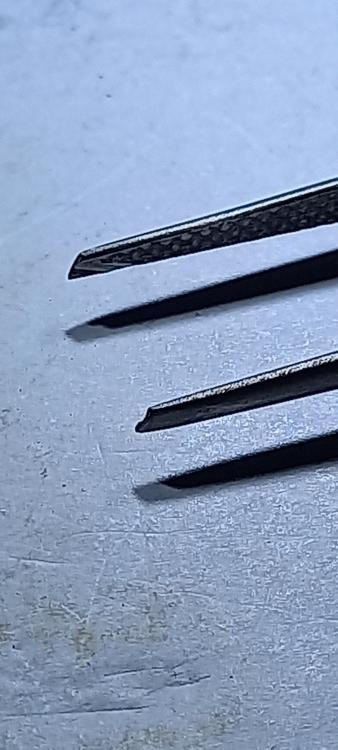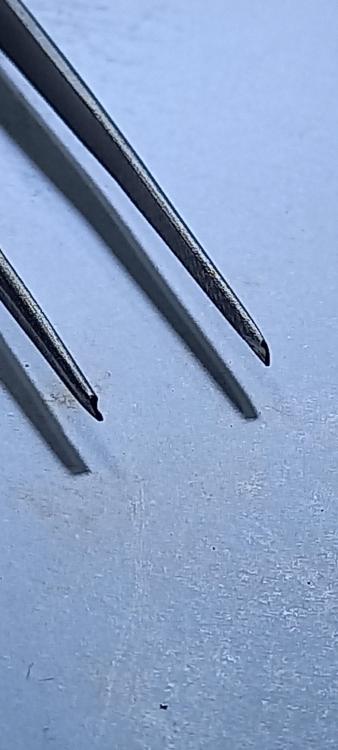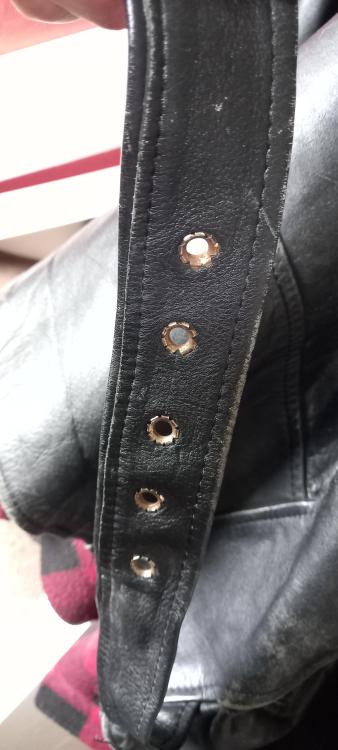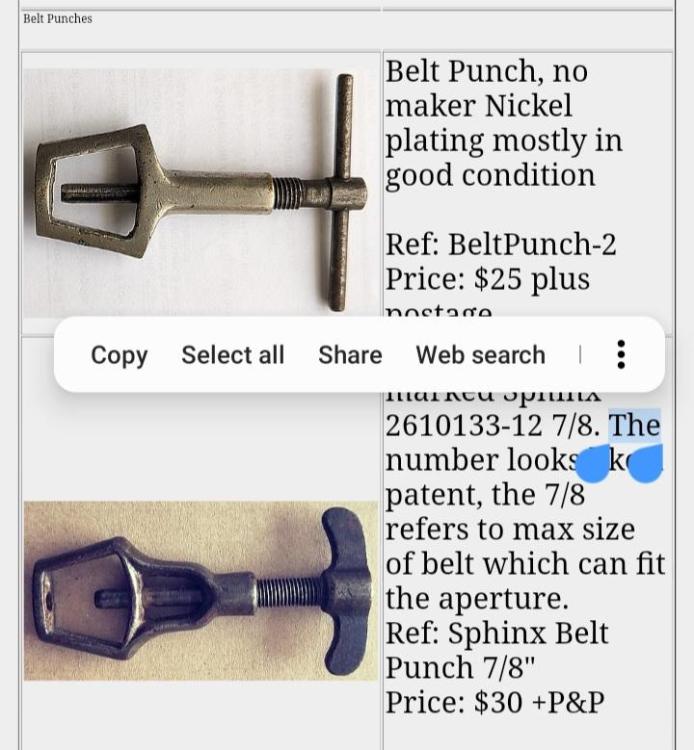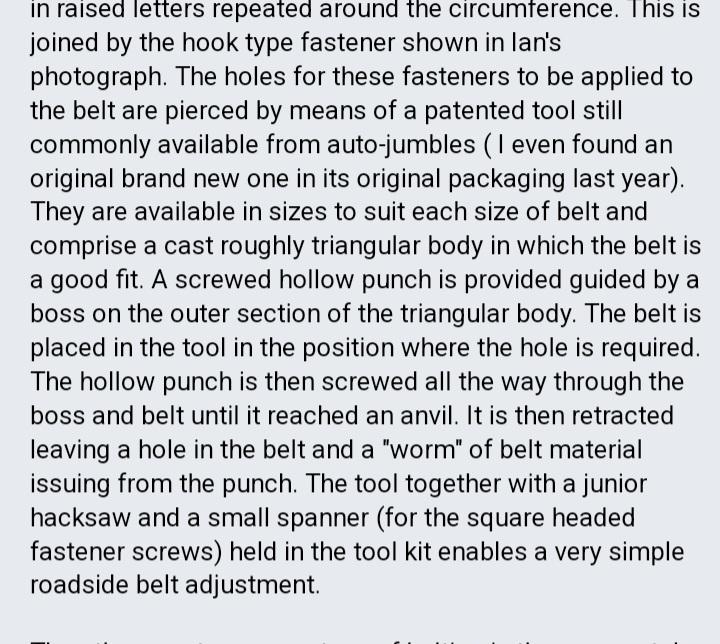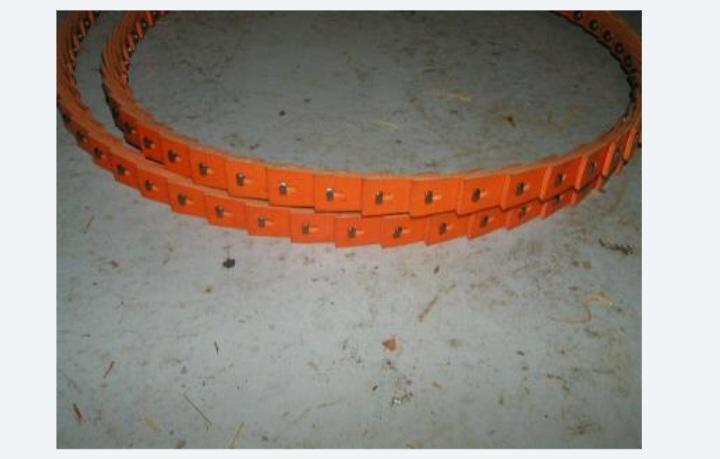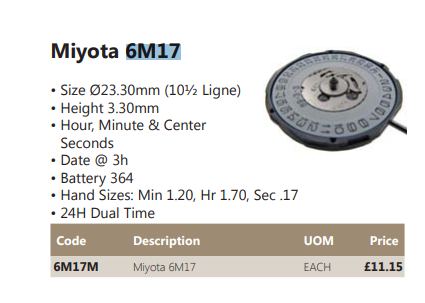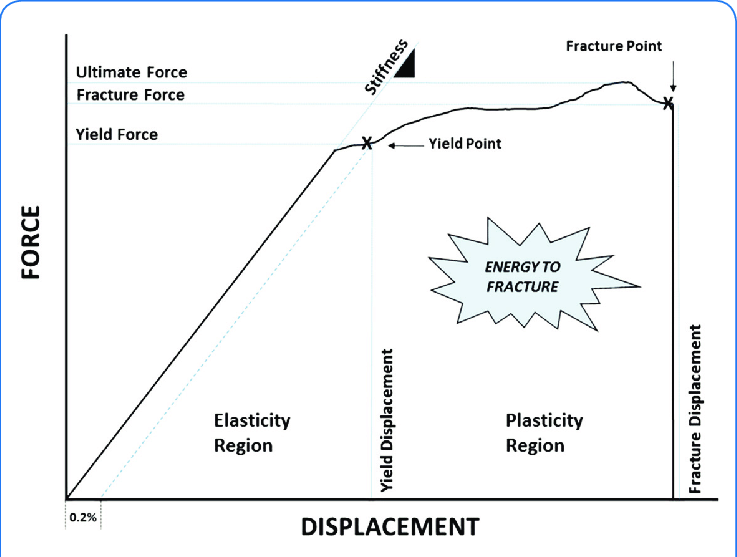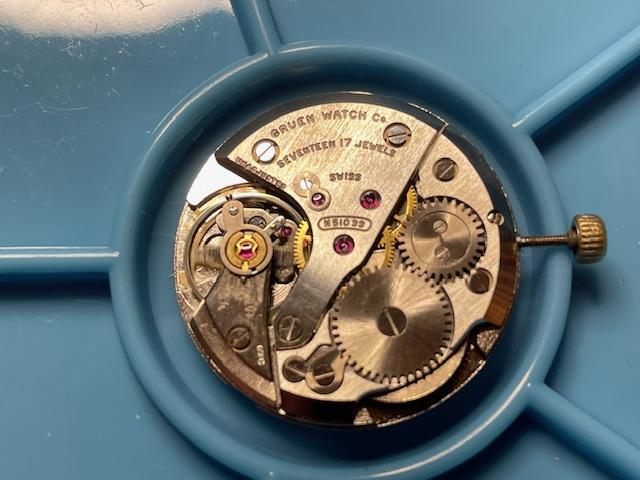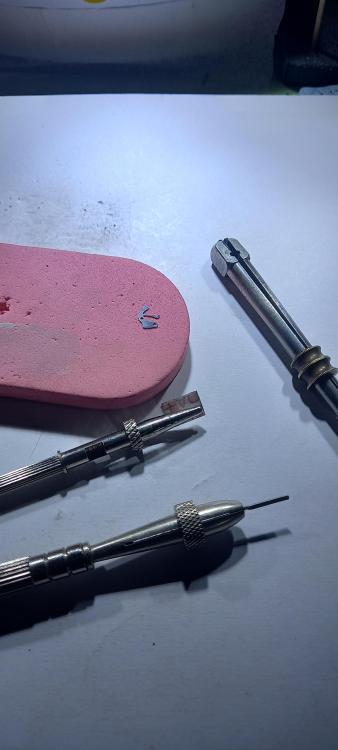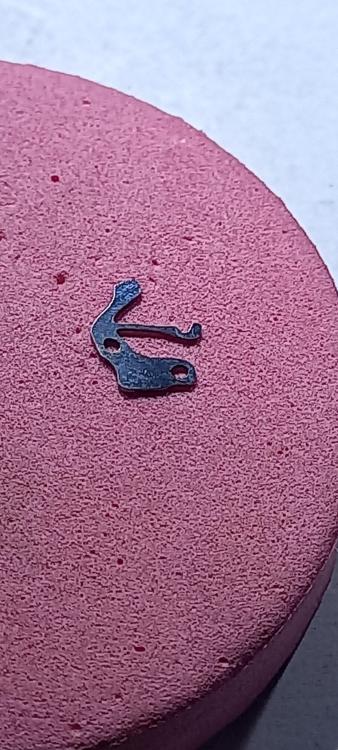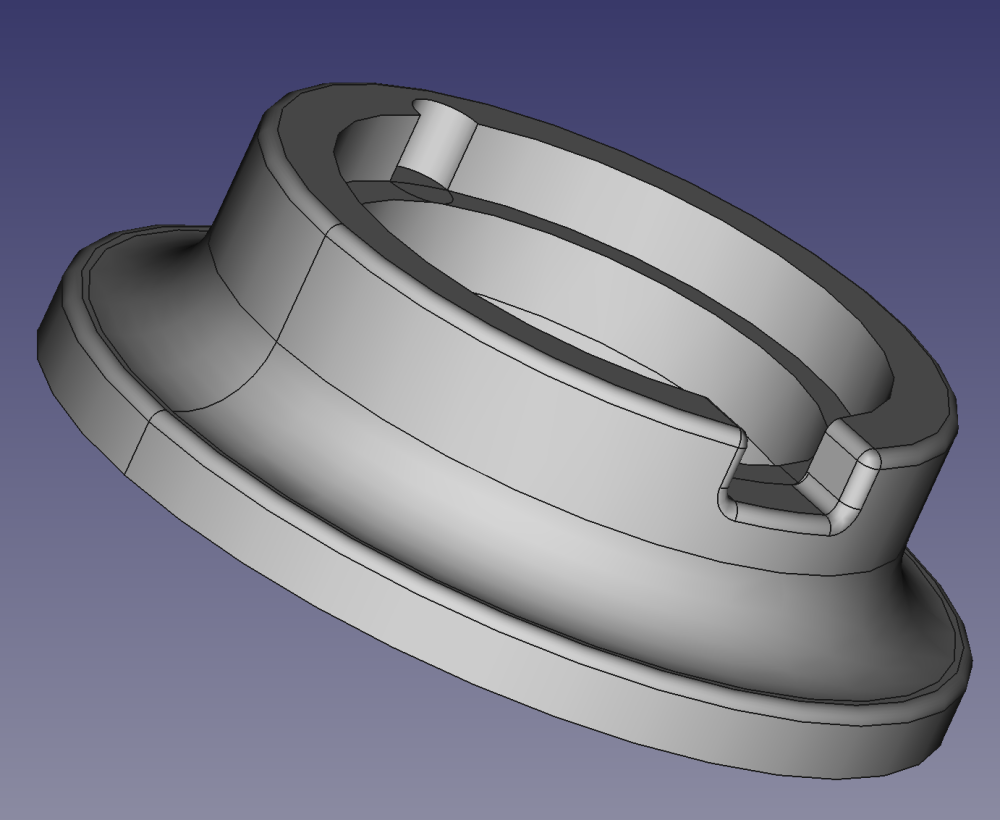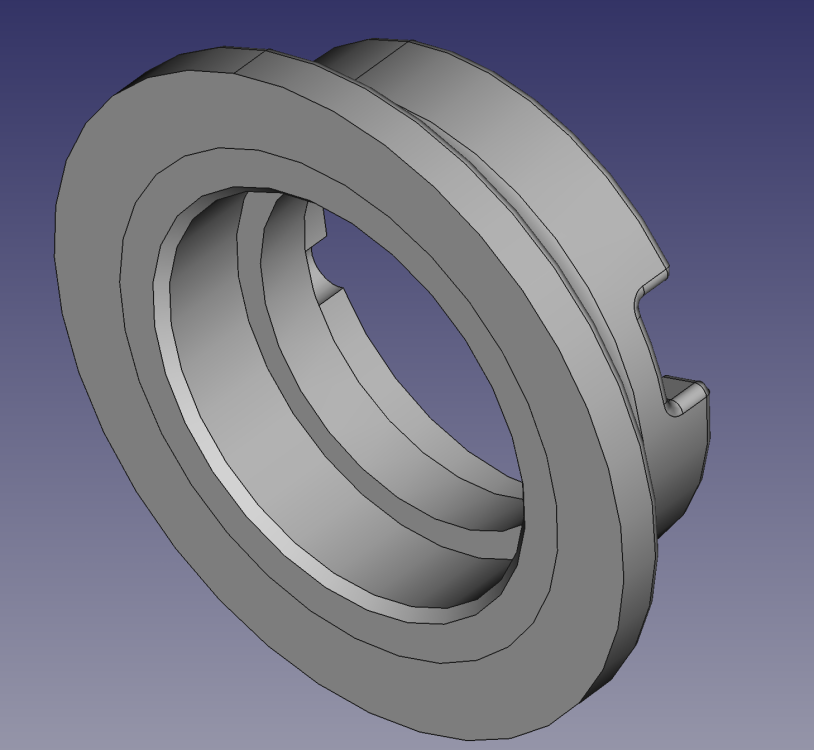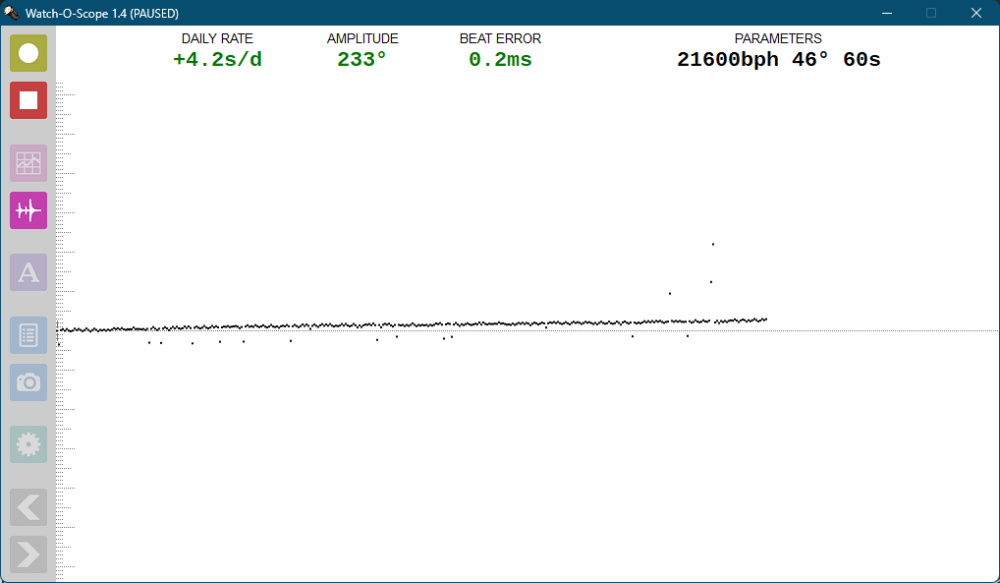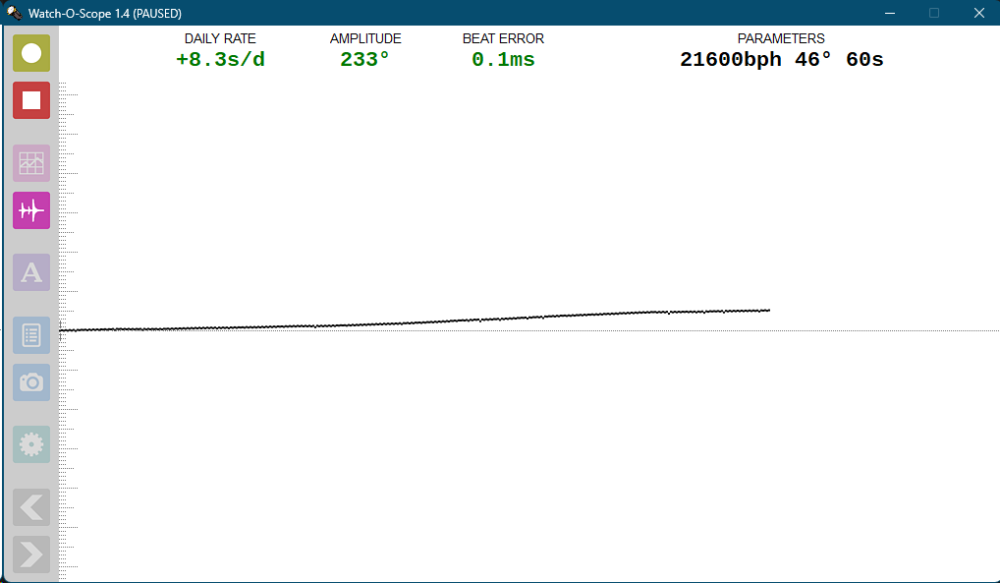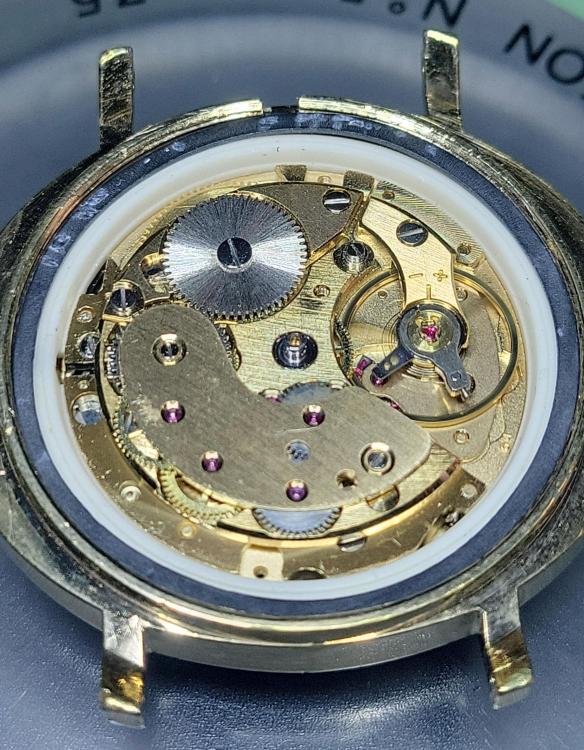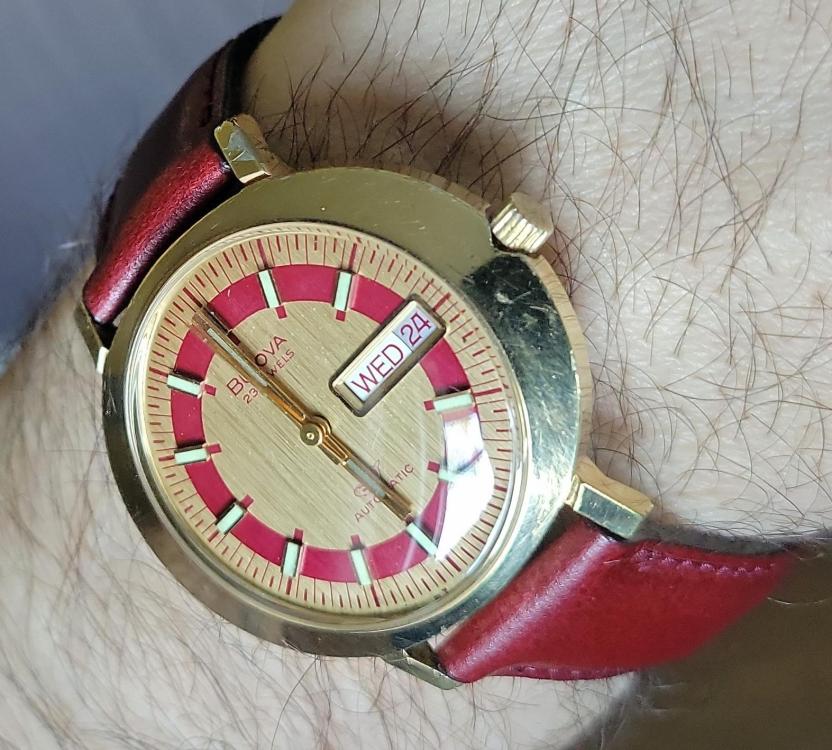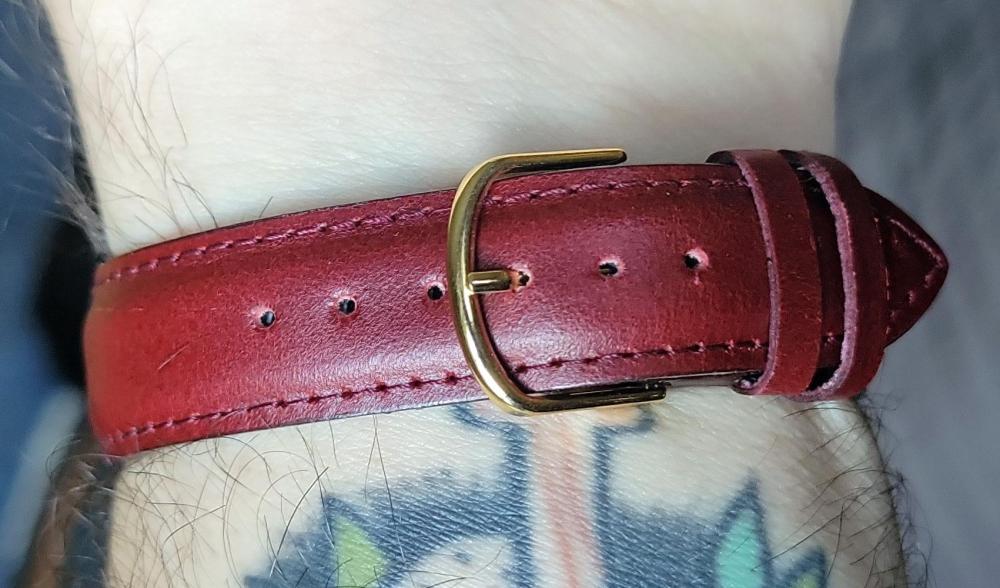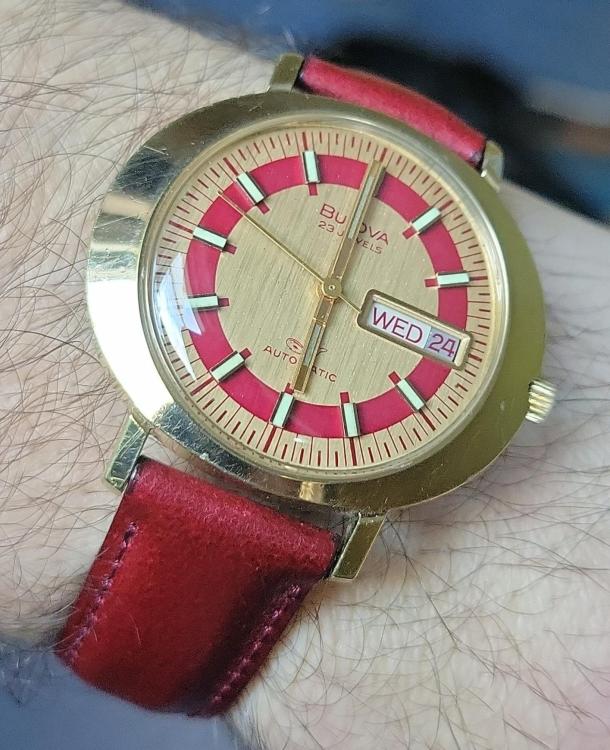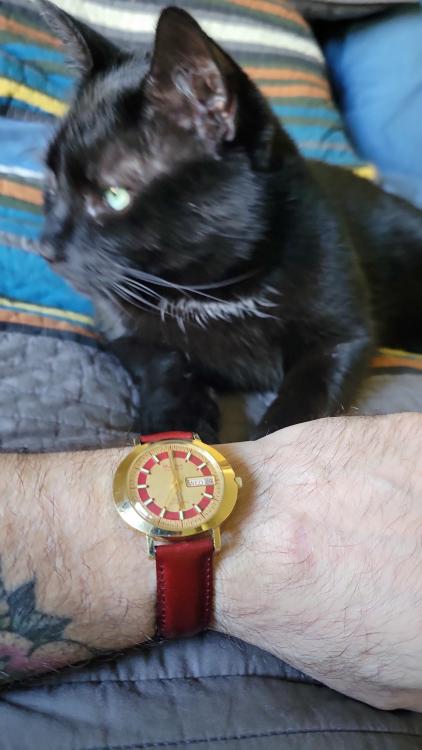Leaderboard
Popular Content
Showing content with the highest reputation since 04/25/24 in Posts
-
6 points
-
4 points
-
For those of you who are looking for a Seitz jewel gauge, I just want to make you aware that there may be a good opportunity right now at Tradera.com (Swedish eBay). The site has significantly fewer visitors than eBay and I have made several fantastic deals there. 1500 SEK corresponds to approx. £110/€128/$137 https://www.tradera.com/item/1922/631487681/seitz-urmakarverktyg-matare Just to make sure, I'm not associated with this listing in any way!4 points
-
4 points
-
According to these guys "Coating watch parts with a thin, even monolayer of epilame provides an effective oleophobic barrier that halts oil spread in its tracks." Which is exactly the same process that causes water beading on a waxed car. An oleophilic treatment would actually cause the oil to spread out to as thin a layer as possible as every oil molecule would try and come into contact with the oleophilic surface. The reason an oleophobic surface prevents spreading is because the oil behaves in such a way as to have as little contact with the treated surface as possible.4 points
-
Picking up this side-tracked post again as I just removed a balance staff of a 1920's Omega (35,5L-T1) I was impressed by the way @Delgetti had his setup when he had to change out a balance-staff (https://www.watchrepairtalk.com/topic/28854-new-balance-staff-not-riveting-to-balance/page/2/#comment-244054 Not only that, but also the idea of removing the seat first before punching the staff out from the seat-side, avoiding the whole discussion of the rivet yes/no enlarging the hole. I didn't have the fancy clamps & tools Delgetti has, so I used my screw-head polishing tool. Initially I used #1500 grit diamond paste on the steel wheel, which kinda worked, but very slow. I changed to #800 grit diamond paste, which worked better, but still slow. Then I glued #240 sanding paper to the steel disk; That worked and the disk was hand-driven. Once close to the balance wheel, I took the sanding paper off and continued with #800 diamond paste. One can only do this when the balance wheel sits true on the staff and has no "wobble". I went on grinding until I saw some diamond paste on the rim of the balance wheel. This was as far as I could grind and it seemed that at that point there wasn't much left of the seat. Carefully, with my staking set, I knocked the staff from the seat-side out. Turns out that the thickness of the seat left, now a small ring, was only 0.1mm. The balance wheel hole is in perfect shape and no damage done to the wheel at all. Of course, if the wheel has a "wobble" or isn't seated true on the balance staff, you can't get as close and there will be more left of the seat. In my case, it worked perfect I'm very happy how this method worked out !4 points
-
4 points
-
4 points
-
Not a family member, and yes, it no way near as good, as some information got lost from original site and some information got incorrectly copied. The original site is available as iOS app here: https://apps.apple.com/fi/app/ranfft-watch-movements-archive/id65020089393 points
-
Even the amount picked up by the smallest oiler can be too much. I made my own oiler with a 0.2mm wire. And I use the amount picked up by the smallest black oiler and use that to transfer an appropriate size droplet to the tip of my homemade oiler. The final amount of 9415 used is so small that it seems ridiculous.3 points
-
I assume you're using 9415? the concerned with 9415 and I'm attaching a PDF from Omega is too much can cause a decrease in amplitude. This is why you look at what they do they go to extreme lengths to put extremely tiny quantities. so as you've discovered proper lubrication of the escapement increases the amplitude. We've seen it on this group where people are having typically newbies issues and I will ask if they lubricated the escapement the usual answer is no they had not because and once they did they saw spectacular improvement. one of the amusements with lubrication tends to be so many variations. For instance I was in a classroom once and the students all came from for the most part accredited schools in watch repair. So the instructor asked how did we lubricate our escapement's and I don't remember the actual quantity but it's really quite amazing how many people can interpret slightly different ways of doing the same ask. Of course the instructors method was the approved one. This was the place a drop of oil on the impulse face of the exit stone. Allow one third of the teeth to go by and place another drop then another third and your escapement should be lubricated. But sometimes and yes it will show up in the timing machine you'll see in your regular line because if the oil didn't transfer all the way around to the other stone that does cause a issue with the timing machine. Oh but when I was in school we were using 9010 as 9415 did not exist yet although 941 did which is an oil recommended for escapement's. it has to be dissolved in a proper solvent with the right amount of concentration as you want a microscopic layer on whatever your treating. My understanding is the vapor process is the very best but the vapors are not good for human consumption. The reason why the vapor process is nice is that it puts a very very thin coating on versus dipping in a solvent which can vary depending upon the concentration. 8645_WI_40_rules for lubrication cousins.pdf3 points
-
Used with the correct fitting staking punch it will remove the roller.3 points
-
They don't seem especially clogged not like teeth on a file, maybe a little but a good clean up will certainly improve them. That one in particular is unnamed but still seems fair condition, the others are really good quality, i think the seller was hoping for higher bids. No thats just staining Rich , the surface i would say are pretty even. Probably some discolouration from a metal it was used on. They all bite into spring steel nicely, better than buggering up a toothed file. The brands are from two reputable manufacturers. Thats a really good price . See how the bidding goes.3 points
-
I was considering just building a watch from scratch, I've heard the nh35 movements have a lot of case and dial choices and apparently they run poorly when you buy them new so a good service is required. But honestly building a watch like that doesn't interest me. I love fixing things. There's nothing more satisfying to me than taking something broken and making it work again. Plus watches are cool and easier to store than a car engine! I only had one engine in the dining room and my wife complained. Hopefully the watches will go unnoticed.3 points
-
I think we all get a lot out of this group, and it has been pivotal in my development by the sharing of knowledge, experience and learning from more seasoned experts such as @JohnR725 and others (you know who you are!) as well as fellow novices. I think that having a backup communication plan in reserve so that if there is a future problem just makes good sense. I don't think anyone is trying to undermine the forum, but if something unthinkable happens, like the Ranfft website for example, then it would be good if those who are willing can still keep in contact. Speaking personally, and I know I risk a charge of heresy, it would be good if Mark could be a little more visible in this forum, and maybe give any insight from time to time on the future/progress of forum and instructional videos etc. even if its just to confirm the status quo. I appreciate he is a busy man with a full time job, but so are most of the rest of us and to post a few lines every now and then shouldn't be too much to ask to reassure the restless villagers. Best outcome for me would be a message saying something along the lines of: "Hi guys, all good, no planned changes... enjoy the forum, will message again next month!" Just my two cents.3 points
-
Knocked out another 404 last night...when you are in the zone! This watch was a non-runner which I picked up as part of a lot of 8 watches, so works out to be $3.12 per watch. Before: And the finished watch, new crown and stem and the crystal was cracked so was replaced. I also replaced the mainspring as the original was the old steel type spiral and very 'set' - all else is original: The Movement was a AS 1686, but in reading around a little the ACCRO watch company were sued for their use of the five point crown on their Jacques Pere range as it resembled Rolex, see below: ACCRO then reverted to just ACCRO on their watches - I have done some sniffing around the internet and haven't seen another example of ACCRO and the crown together on a dial so maybe I have something unusual, or maybe I was looking in the wrong places .3 points
-
one little minor problem with your chemistry experiment here which is what exactly is epilam? In other words is it an exact substance with the chemical you specify or is it a term? For instance originally it was steric acid either dissolved in some sort of solvent or it was applied by vaporizing it. Then now it's all kinds of different things the watch companies all have different ideas there's a whole bunch of patents. So is not always an exact substance. let me snip out a image from the patent that I attached up above. Notice I highlighted something it seems to disagree with your evaluation.3 points
-
can I ask why you're not happy? did you notice that the acceptable low 24 hour amplitude of this watch is 160°? is there any possibility that a watch company could manufacture a watch that could actually run at a low amplitude and keep time? so if they can run at 160° at 24 hours and keep time then they probably would keep time at 240° which yours seems to be doing? then if you're really unhappy with this I would recommend purchasing an original Omega mainspring. Just because the aftermarket have numbers like an Omega mainspring it doesn't mean it's the same thing. Then I would also recommend replacing the escape wheel and the pallet fork. This is what they do in the Swatch group service center if they are unhappy with anything on the other hand they have an infinite supply of spare parts.3 points
-
Maybe I'm over simplifying this and I'm a little late to the discussion, but just by my looking at oil when I use it on a treated cap jewel the oil stays in one nice bubble, but when I don't it spreads out to the edges of the jewel. I'm not sure (but could well be wrong) but the analogy of a waxed car and rain is inaccurate in this case, the wax is very hydrophobic and repels the water, however, the process epilame works by is a different physical process based upon cohesion/adhesion (oleophilic) not repulsion (oleophobic) at least as far as I have read/observed. If one were to use a oleophobic substance equivalent to wax (hydrophobic) then one would need to create a donut shape to fence in the oil, however if one used such a strategy with a epilame which is oleophilic then the oil would sit on the ring of the donut and not in the 'donut hole', exactly where you don't want it. Even if the oil is smeared then the oleophilic epilame should pull it back to the center (see diagram below). Reference For interest the chemical in epilame is 2-(PERFLUOROHEXYL) ETHYL METHACRYLATE, CAS NO: 2144-53-8 Out of curiosity I looked at the price of buying this in the real world i.e. from a bulk chemical supplier, and for once it is about the same price as buying in the watch world.3 points
-
3 points
-
Hi. It’s always better to replace the coil but in the event of being unable to find one it’s nice to know that repairs can be effected. I prefer the conductive paint option because of the lack of heat and the chance of causing further damage.3 points
-
Glue a nut to the barrel lid, insert a bolt, pull, disolve the glue. Maybe someone will have a better answer.3 points
-
Hello everyone, for what it's worth, here is my approach: 1. Escape wheel submerged in Epilame, then dried quickly with a hairdryer. Then the final tip of the pivots are cleaned by poking into pithwood. The logic being that the Epilame is removed at the intended contact point (to avoid any residue that may mix with the oil), but remains in the areas where oil is not supposed to spread to (further down the pivot towards the wheel). The escape wheel teeth also benefit from having Epilame to keep the 9415 in place. 2. I use a syringe to treat only the pallet stones. I suspend the pallet fork with some Rodico so that the stones hang downwards. I notably use a rather thick needle where a drop WON'T form, but rather where the Epilame liquid stays in the needle tip, which I then dip into the pallet stones. It requires some practice to get the right amount of Epilame into the needle tip, but it works for me now. This way, no drop will "jump" onto the pallet fork and potentially go all the way to the pivots. 3. I let the movement run for a few minutes without lubricating the pallet stones... to scrape off the Epilame in the intended contact "channel". Then I remove the balance again and lubricate the exit pallet stone with 3-4 successive drops. See the "channel" that forms on the pallet stone in the picture -- not so easy to see, but it's visible. I am conflicted about the use of Epliame in balance jewel settings. My impression is that the two jewels sufficiently suspend the oil (even 9010). Apparently Rolex recommends NOT to use Epliame there (heard from a former Rolex service center watchmaker), as it could cause additional wear. Apart from that, I follow specific instructions where I can find them. E.g. the infamous Rolex reverser wheels or sometimes (parts of) the seconds wheel. Exception: I'm currently servicing an Eta 2824 and will probably ignore the service sheet that recommends treating the whole keyless works with Epilame and then using HP1300... I'll skip the Epilame and use 9504 grease.3 points
-
have you ever noticed a nicely waxed car when water droplets hit they literally just run off. That's what you would have with epilam. The whole purpose is to keep the oil from spreading and if you put directly on top of the epilam it might not form a nice round ball but it has nothing to stick to which is exactly what is supposed to happen.2 points
-
If you tend to be a little heavy handed then heres something that might help you to prevent cap jewel loses if you have some spare tweezers. File a round into each of the tips so you can grip a capstone or chaton while oiling or moving them around. Instead of filing along the length, angle file the tips first then file the rounds perpendicular to the angle. This way the tweezers wont get in the way of the oiler. Choose an angle that suits your natural hand grip position. The tweezers can now grip round parts on four sides Instead of two that often flip that part away.2 points
-
2 points
-
2 points
-
Thanks everyone for your helpful replies. I think between us we’ve worked out what’s going on. Next job is to have a proper look at this great wheel assembly, see if I can remove the clip and the friction fit pinion, give the bits a good clean, then put it back together with a bit of blue grease. I’ll also get the pallet fork under the microscope to see if it’s ok or been damaged.2 points
-
It's a little circlip style retaining clip to keep the pinion from riding up out of position.2 points
-
Doctor, If the train turns when hands setting, this means that the train is not blocked. And this is true for all kinds of trains design. The train is normally blocked by the lever. So, put the lever in place and try again. If the train turns again, search where You have placed some wheel upside down and it is not meshed with the next one in the chain. The other thing is the amount of friction that is needed to overcome when setting hands. Yes, the friction part here is in the great wheel, and it needs lubrication. If the parts are dry, then friction will arise, seizing will happen and thus risk of breaking of teeth in the train or breaking of joint wheel/pinion. I don't know this calibre, but I guess the clip is part of the friction device. But for sure it stays tilted, which is not normal. So, pay attention to it and see what is wrong there2 points
-
2 points
-
As I'm only cleaning watches in small numbers at home, I pre-clean any significant deposits of old grease and oil before using the cleaning solutions. I scrape off deposits with pegwood and Rodico, and if really dirty, wash parts in naphtha with a brush. So I'm happy using DX, but can understand why it's avoided by the pros.2 points
-
Hi New. More of a get you out of a hole than a bodge. There is no substitute for a new coil.2 points
-
2 points
-
The plate is OK, thanks. It seems the answer to my question is that this is a 'hack' & for me another reminder that in general, one won't be the first person to be tinkering with an old timepiece!. As you day, I've been fortunate to have gotten some good advice and, just as important, encouragement. I've been lucky then not to have the balance spring break as a result of my novice 'ministrations' - but I did remember to 'stroke' rather than bend per se. The clock is of sentimental value to the owner so I'm relieved to have now got it running to time with the support & encourage of forum members like yourself.2 points
-
In think you are effectively shortening the coil by shorting out damaged tracks. In my case as long as the continuity was good and the resistance not too greatly affected it should be ok . One was on an era movement,2 points
-
Would the paint increase the resistance of the coil ? Effectively joining the wires that are painted. I imagine its important to only paint the smallest of areas to make the repair.2 points
-
I would agree, in order to work harden something you need to exceed it's yield strength when it moves from the elastic zone to the plastic zone and you get permanent deformation and work hardening which is fairly close to its failure point, relatively speaking and dependent on the material/alloy of course. In theory you can load something constantly within its elastic range and not suffer work hardening issues.2 points
-
Snap! I recently finished my Gruen 510 movement - though the case for mine is in a rather sad state; I'm going to try re-plating it (in nickel, it's not a gold one). Re. the screws, I got a few of the one gram mixed batches from ebay. I've only needed a couple of screws for things so far, both rare, minuscule types - but both in the mix, after enough time sorting through them! The ones such as normal bridge screws are quite common in those lots.2 points
-
Two pins or screwdrivers angled out slightly, pressing through from the barrel centre from the opposite side so they contact just clear of the hole in the lid? eg. Strap pin driver needles or similar.2 points
-
I didn't think pulling to set position would work harden the spring, in that position it is stressed where the arm starts. By work hardening i meant rapid polishing at that point, a bit like polishing a pivot work hardens as it compresses the steel. I doubt polishing by hand would achieve much in that respect though. Its finished, arm polished up mostly at the join to the bridge's main body. I'm ok with it, the screw holes aren't great as i had to open them up by redrilling and positioning it was difficult, I'm not much use with a loupe, opening up with a file might be a better option for me or i could just use the correct drill size . And the detent is way too deep, i had to guess that with the stem release out of position and sat on top, but i only took one measure and went for it, no slowly slowly catch your monkey . First go I'm happy , well sort of, it works and thats a big thing for me, next one will have a bit more finesse. Anyone thats interested, after filing, i used a 2000 grade home made diamond micro file and then 20 micron film, the film is much better than wet and dry, more stable to use and doesn't shed cheap grade grit everywhere , then auto polish on a sponge pad.2 points
-
OK, welcome in the world of alarm clocks... I guess the 4th wheel is dished because it is from another movement. If it was not dishet, then it would not mesh with the pinion of the escape wheel, am I right? The marks of wear on the 4th wheel pinion doesn't corespond to the 3th wheel table position, at list this is what i see on the picts. Calculating the rate is easy - there is a formula - BR = T2 x T3 x T4 x T5 x 2 /(P3 x P4 x P5) where T2 - T5 are the counts of the teeth of the wheels tables, and P3 - P5 are the counts of the pinion leaves. Vibrating the balance is easy - grasp for the hairspring where it should stay in the regulator with tweasers, let the balance hang on the hairspring while the downside staff tip rests on glass surface. Then make the balance oscillate and use timer to measure the time for let say 50 oscillations, or count the oscillations for let say 30 seconds. You must do the free oscillations test to check the balance staff tips and the cone cup bearings for wear. This kind of staffs wear and need resharpening to restore the normal function of the balance.2 points
-
The one thing I took time over was to round and polish the curves at the bottom of the jumper arm. The slightest mark (left over from cutting of filing) acts as a stress raiser, just where you don't need it.2 points
-
2 points
-
Don't forget Mark is a hard working watch maker so he is also tied up with work. I'm sure he is keeping his eye on this forum making sure it is running along nicely.2 points
-
I've remained silent on this thread, and at the risk of upsetting everyone, the thing that worries me the most the the apparent absence of Mark. The moderators do a great job and the members also pitch in, and the site seems to run itself, but it is a concern for the future of this forum when the owner is absent for all intents and purposes. Like many of the comments above I would hate to log in one day and things be closed down as I rely on this site for ideas and knowledge and also cheer me up. maybe the Moderators could reach out to him, assuming he does not read this thread, and express our concerns and let us know the plans going forward? some kind of WRT ark2 points
-
So here is the new base (v 2.1), I made it so that the base will fit over and swallow the stump of the hand pusher tool (or at least my clone of the tool), I also reduced the OD of the bottom skirt a little as it looked/felt a little large, here are a few pictures and the fake .pdf file which you need to convert to .zip once downloaded. The cut-out seen on the below image on the bottom of the base should swallow the OD (40 mm, +0.1 mm tolerance) of the stump and the height of the stump 9.5mm (measured to 9.1mm, but rounded to 9.5mm) - let me know if this works for your tool. Note, I think you may need to print supports for the new internal shelf created? Here is the fake .pdf for just the FreeCAD base file and 3mf files Modular Movement Holder.pdf Here is the fake pdf for complete set of the new base and ring FreeCAD/3mf files: Modular Movement Holder base and ring v 2.1.pdf However, I'm wondering how often you could use this feature, adding the dial usually increases the OD of the movement, so you would need a new (larger) adapter ring tuned to the OD of the dial and I wouldn't like to grip the dial in any kind of movement holder if It could be avoided for fear of damaging it. Maybe I'm misunderstanding you?2 points
-
2 points
-
All right! Back together, cased up, and ready to rock and roll. Well, after I cased it and forgot the seconds hand. And then after I found a fitting back gasket. And then after I had to take it apart again because I forgot to put the automatic rotor back on. I did find a vintage Hadley Roma strap in red leather, as an homage to the original maroon strap. I'm super pleased with how it looks. Can I say chuffed as an American? I may polish the case at some point, but for now I'm just gonna wear it. And of course, pictures. First dial up, dial down, and on the wrist. Including the cat tax.2 points
-
When you move the index which changes the timing from an extreme fast to an extreme slow, is there a big change in beat error? Obviously there will be a big change in timing. If there is a big difference in BE then this is strongly inferring the the end-curve of the hairspring isn't set correctly or/and the collet is central to the jewel on the balance cock, because the hairspring that is breathing between the curb pin and boot is being pushed and/or pulled when you move the index from left to right. Also not having the hairspring set correctly can dramatically reduce the amplitude. A quick check is to take power off the movement and move the index from extreme fast to slow and with high magnification see if the hairspring sits nicely between the curb pin and boot at all times (give the balance a spin and watch the hairspring - has it got total freedom?) or if it moves by being pushed or pulled by the curb pin or boot. I'm guessing it is the latter. I think that may be a possibility to your problem.2 points





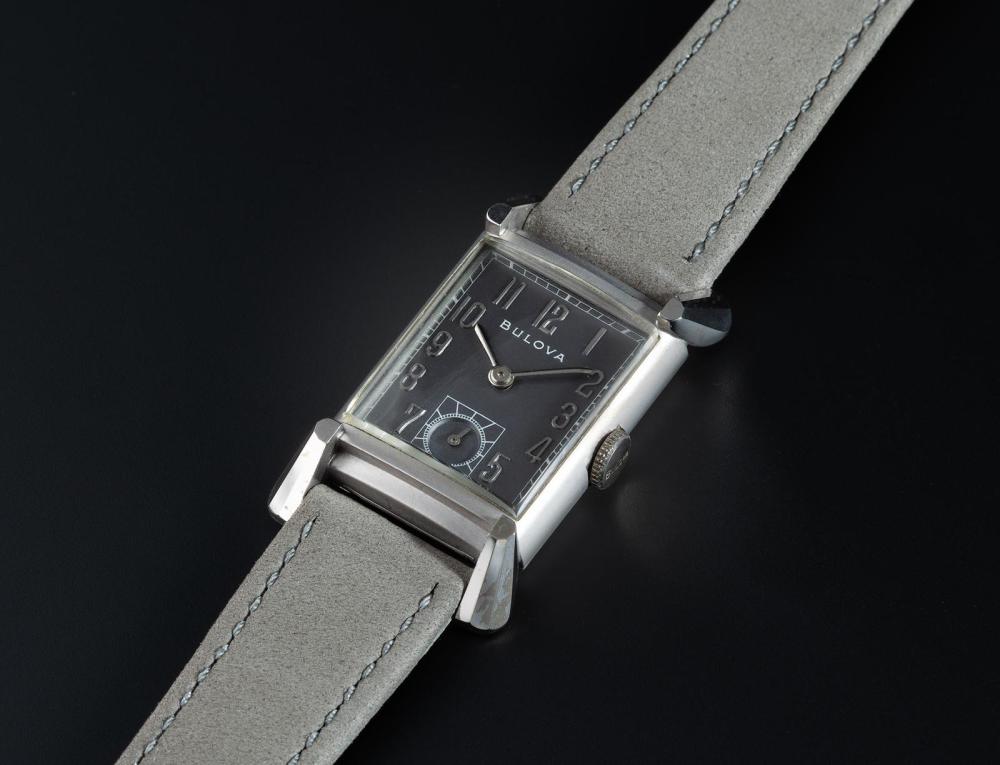
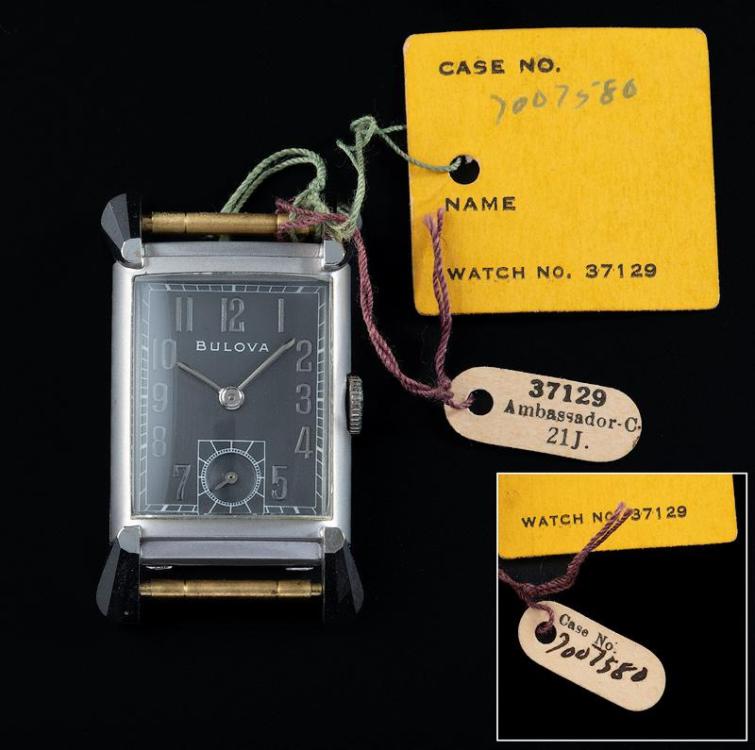

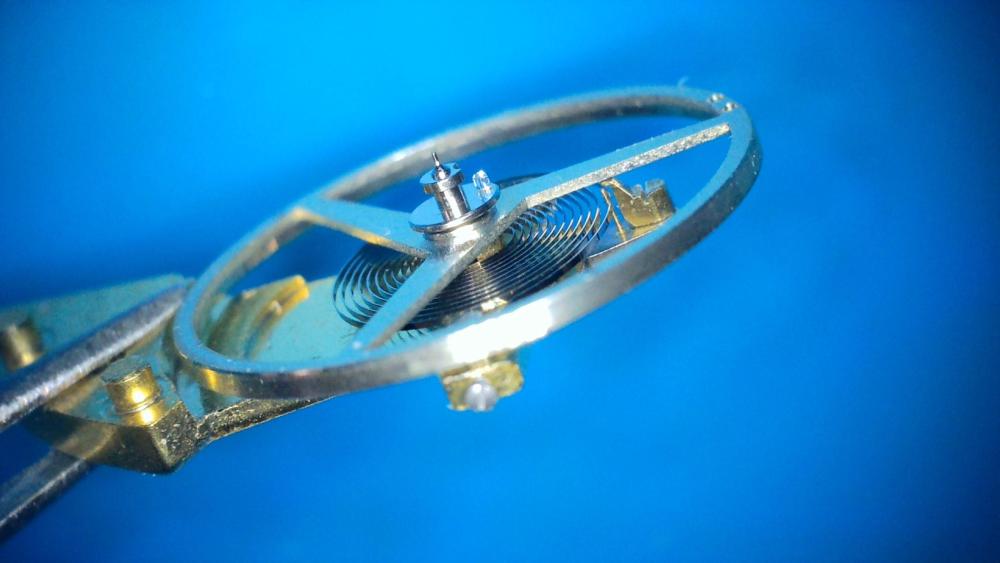

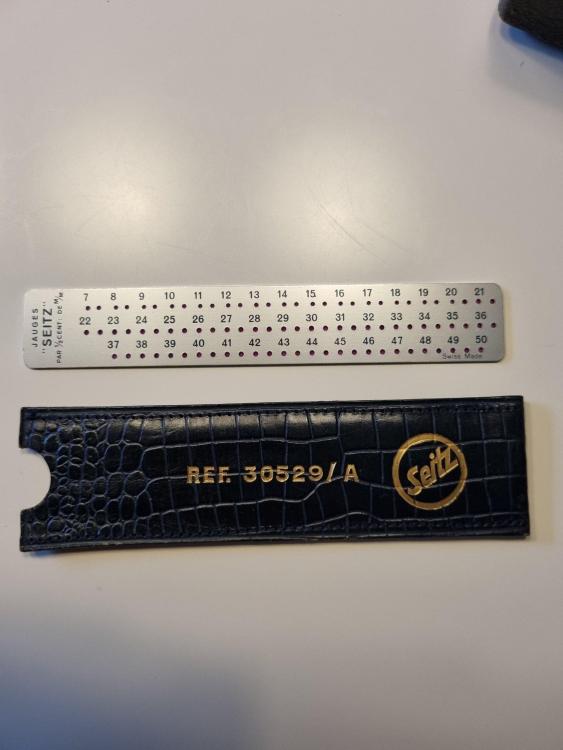
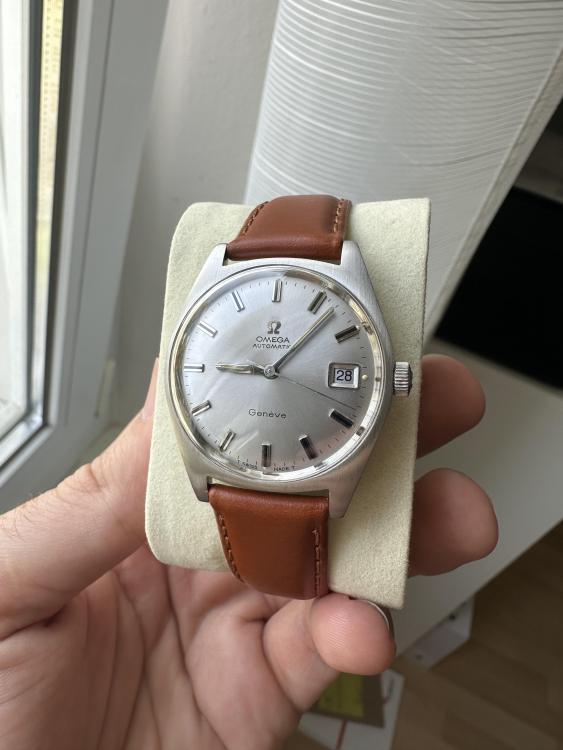


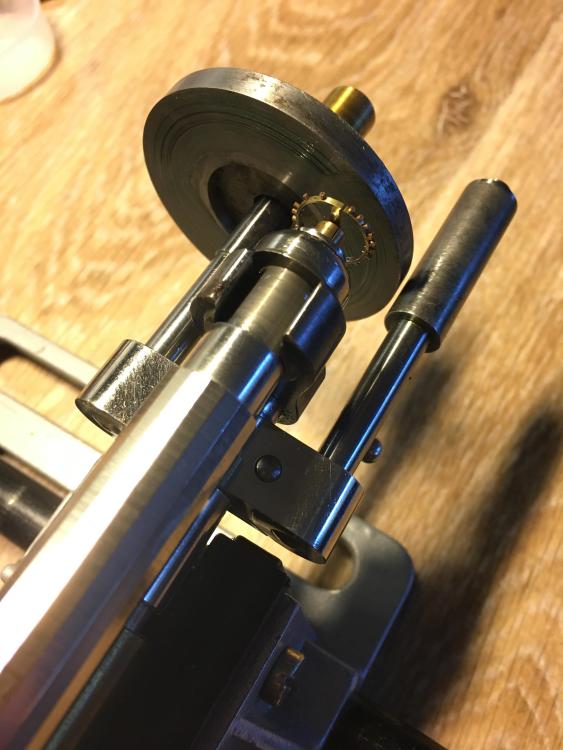
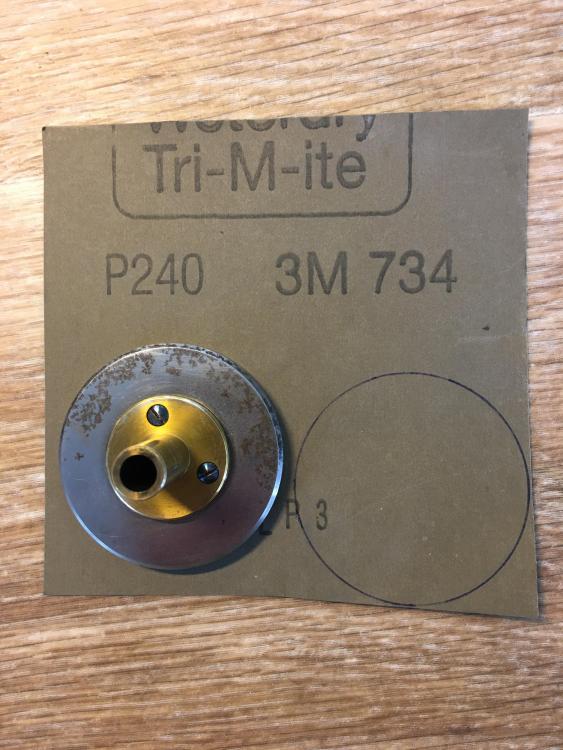
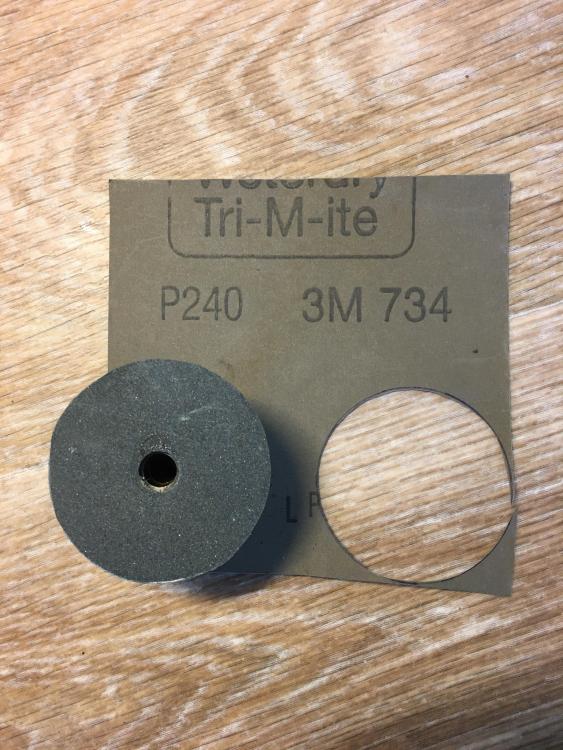
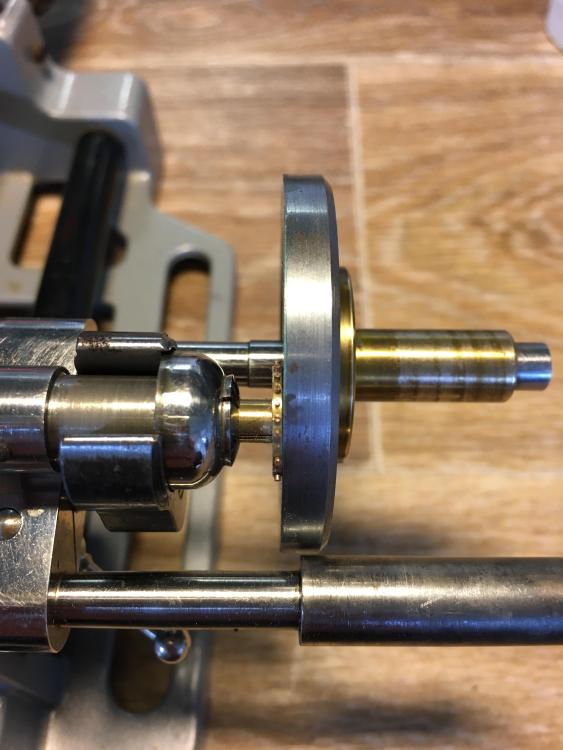
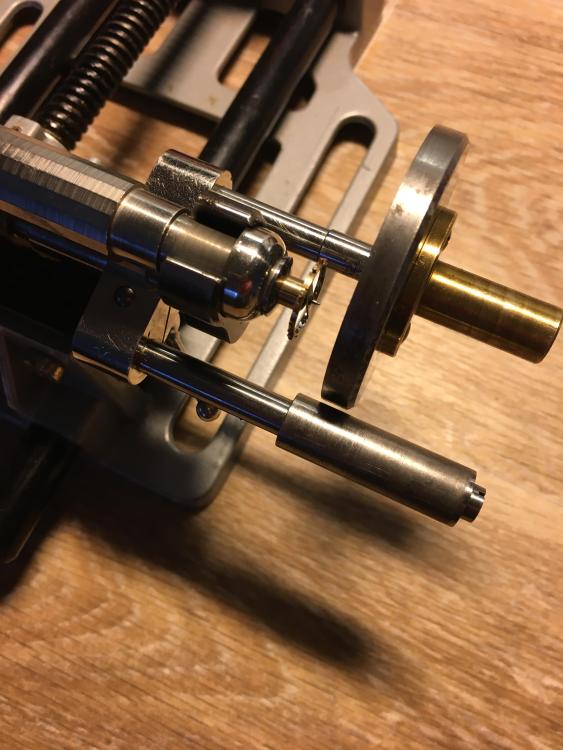
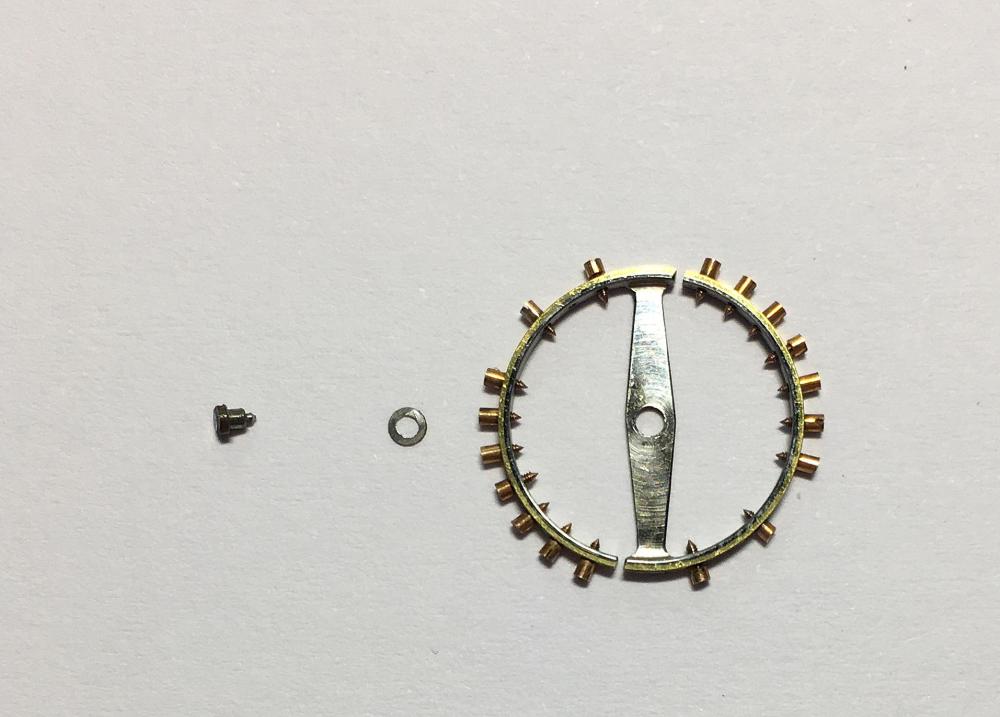

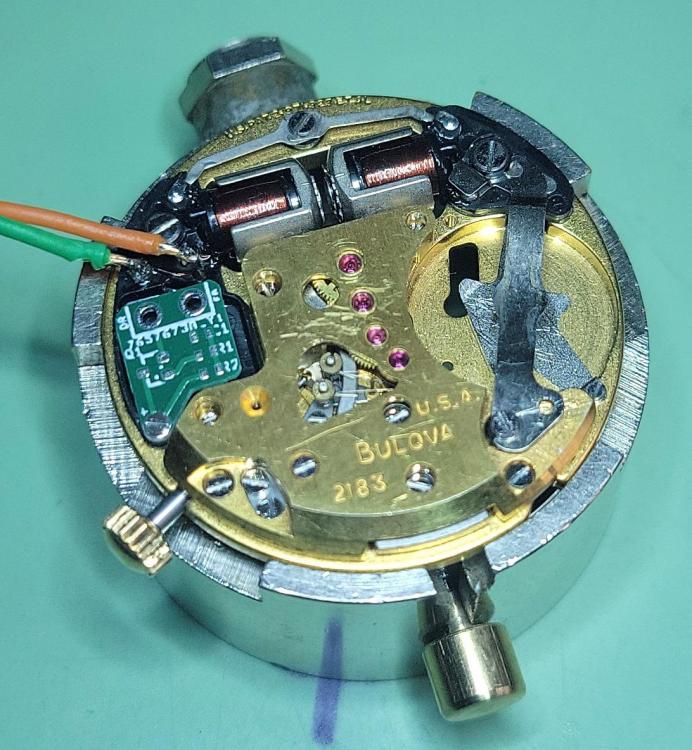
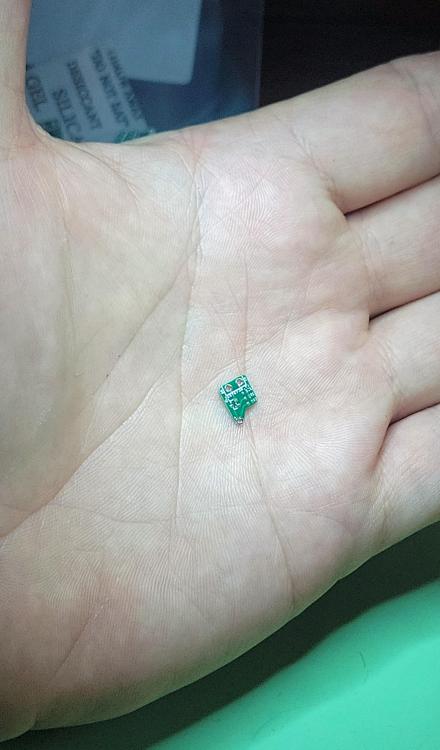
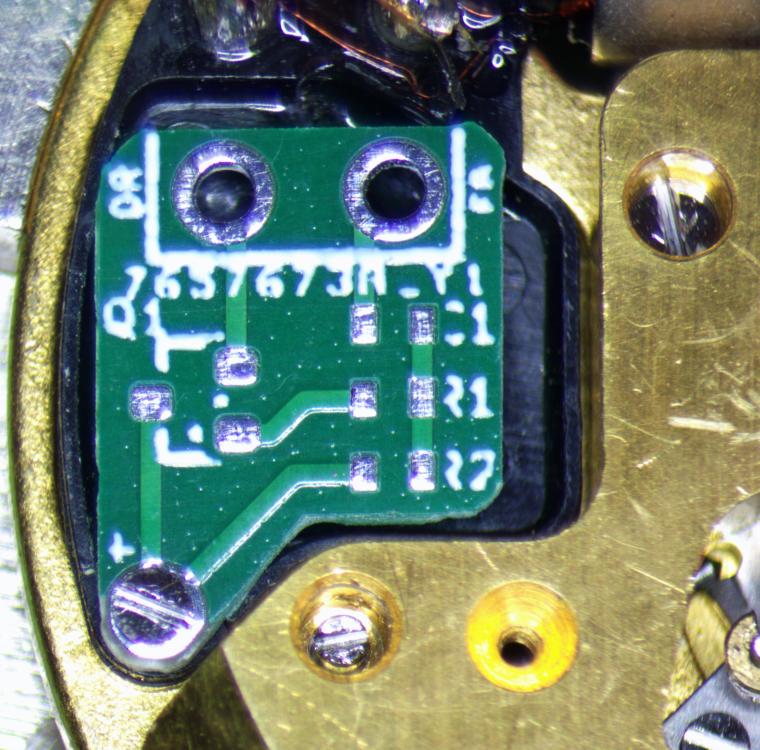
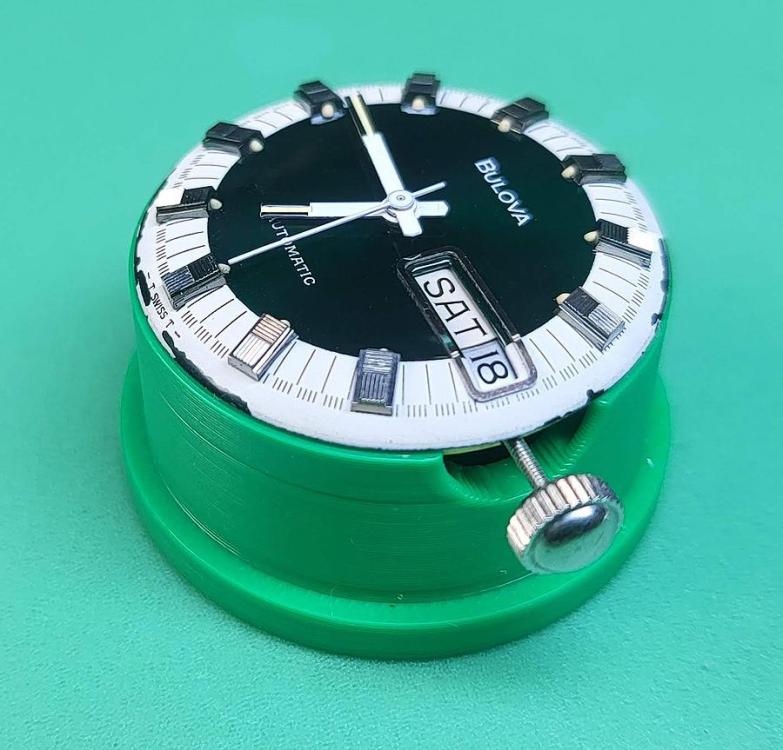



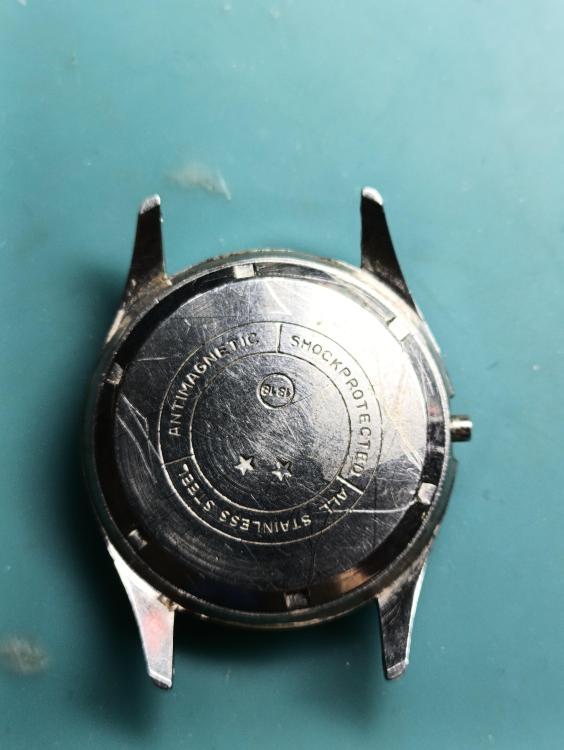
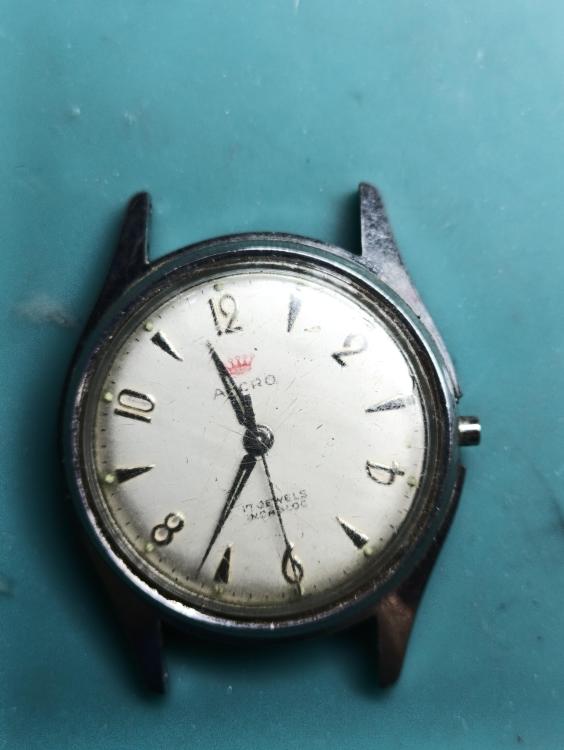
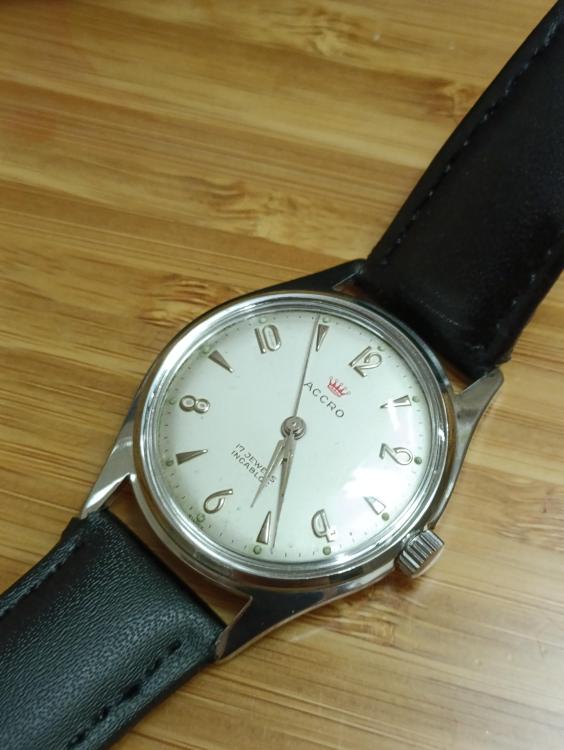
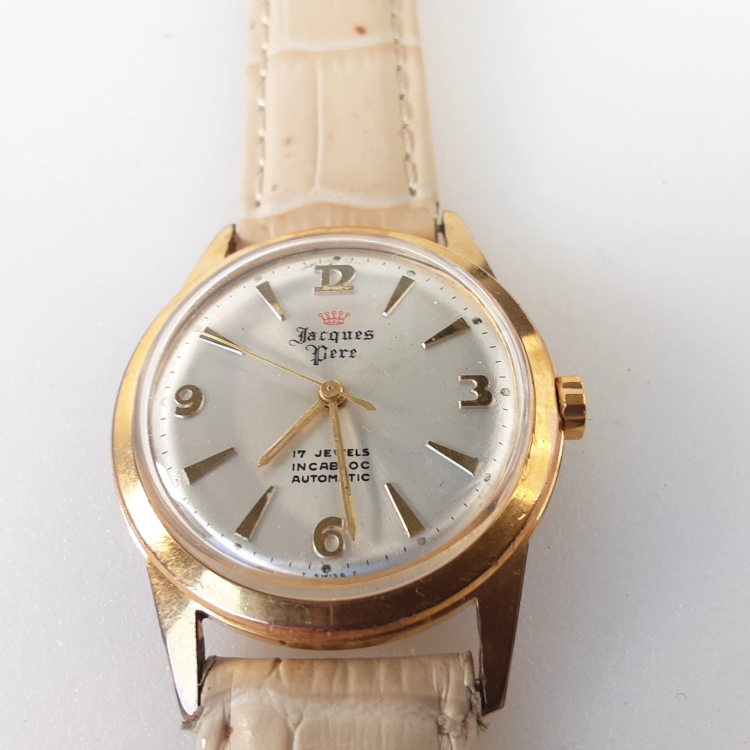
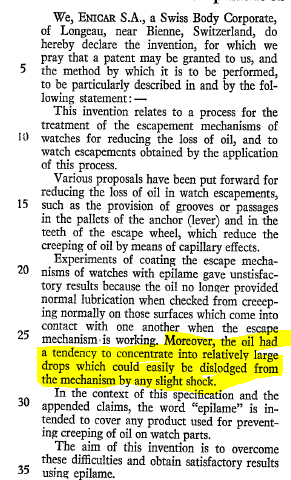
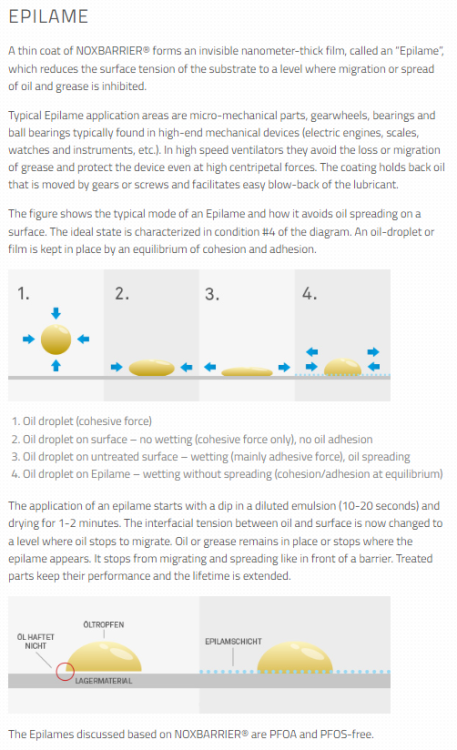
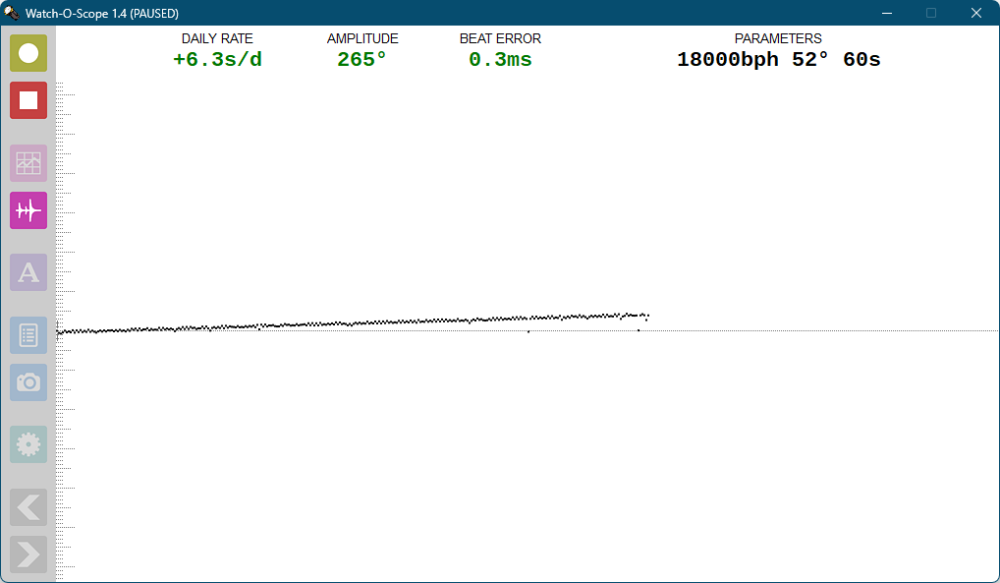
.thumb.jpg.cb17a66989f1e796fd4217db2e9ca9df.jpg)
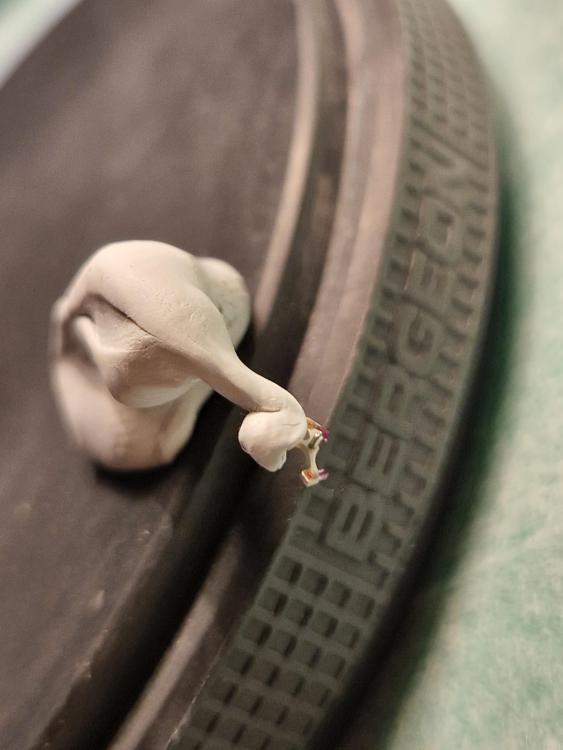
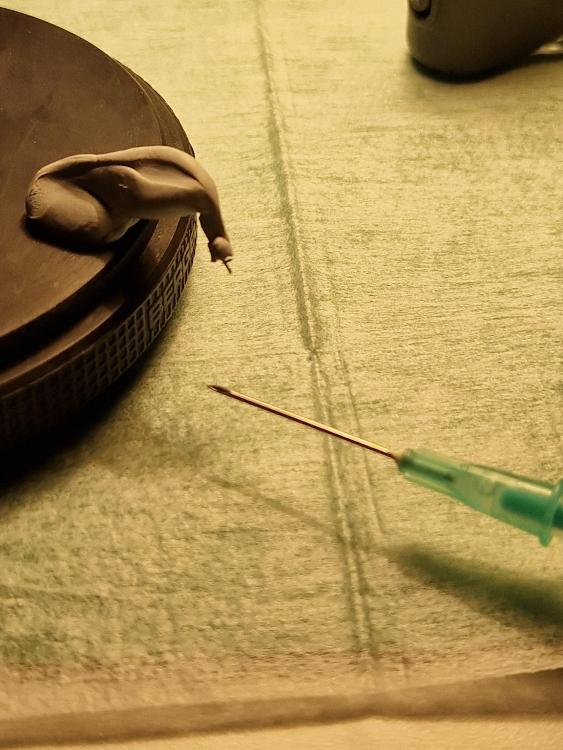
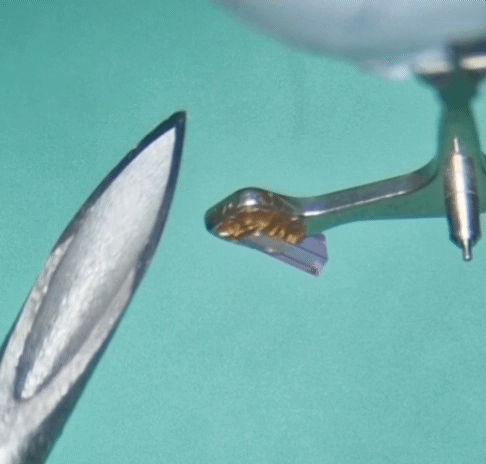
.thumb.jpg.9bb1d20ca71162225b2e652ed4cfed34.jpg)
